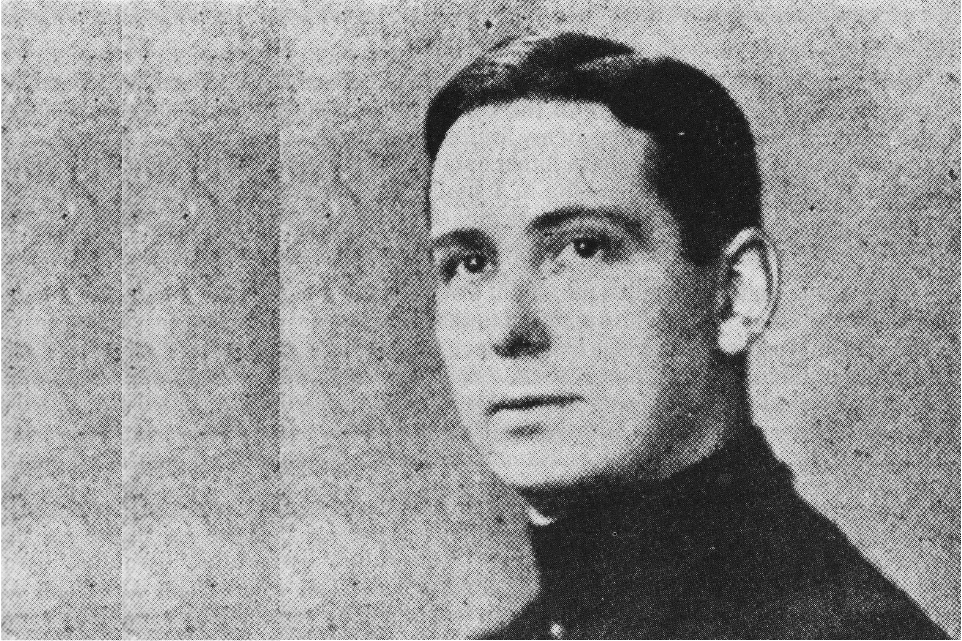The Catholic priests who founded the University of Ottawa in 1848 had dreamed, almost from the beginning, of starting a medical school. But circumstances had never favoured such an endeavour.
Then, on April 8, 1945, the University’s Board of Directors — composed of Catholic Oblate priests— identified three good reasons why the time was finally right to start a medical school:
First, many Ottawa medical doctors supported the idea.
Second, the federal government would subsidize the tuition fees of war veterans.
Last, but not least, if the University of Ottawa didn’t start a medical school, then Carleton University — a secular, English-speaking institution — would do it first.
“Will we let others get ahead of us?” Father Jean-Charles Laframboise, who served as rector from 1946 to 1952, asked. “And once an English medical faculty is established, when will we be able to start one in French? And what about Ontario’s English-speaking Catholics? There is only one solution: to found a faculty of medicine.”
Father Danis’ mission
The Board entrusted the task to Father Lorenzo Danis, supported by a provisional council of six Ottawa medical doctors. Sometimes referred to as the founder of the Faculty of Medicine, Father Danis would become more colloquially known as “Lorenzo the Gatekeeper” for his powerful role in accepting or rejecting prospective med school applicants.
Father Danis soon encountered three good reasons why the time wasn’t right for University of Ottawa to start a medical school.
First, lack of space.
Second, lack of money.
Third, lack of professors.
The quest for funds
The problem of space was solved, at least temporarily, when the University acquired a cluster of old army barracks in Sandy Hill at the cost of $8,914. (See the story “Building a Medical School.”)
The problem of money stemmed from the fact that the province of Ontario had a policy against funding religious universities. Father Danis started a campaign to solicit donations from University alumni and supporters in Montreal (where the Oblate order was based), raising nearly $250,000 in two years. Further fundraising campaigns among loyal Catholics — and lobbying of the provincial government — brought in enough funds to keep the med school afloat, including a one-time capital allocation of $250,000 by the Ontario government in 1947.
But money was still tight, and government support came at the price of religious purity. In 1948, the University agreed to create a Board of Regents that included non-Catholic members. In 1965, the university would become fully laicized, as the Oblates ceded control and ownership to the provincial government, largely driven by the need to make the Faculty of Medicine eligible for bountiful government funding for the health sciences.
The quest for profs
Although most of the qualified professors of medicine in Canada already held university positions, Father Danis did manage to recruit a few local faculty members. Dr. Leonard Bélanger, a bilingual Catholic from Montreal who had served as an MD in the Canadian Air Force, became the first chair of the Department of Histology and Embryology.
Dr. Desmond Magner, an Irish-born cancer specialist who earned his medical degree at the University of Toronto and commanded a field medicine corps during the war, became head of the Pathology Department.
A few others took on part-time positions. But to fill out his faculty, Father Danis turned to Europe.
Dr. Fedor Bohatirchuk, a Ukrainian refugee, was recruited from an American hospital in occupied Germany; he arrived in Canada along with his portable x-ray machine to join the department of Anatomy (see the story “Ukrainian radiologist and chess master may have inspired Dr. Zhivago”).
Dr. Victor Szyrynski, a psychiatrist who had joined the Polish underground resistance movement during the Second World War, came to teach neurophysiology.
Dr. Jean Ettori, a Chevalier de la Légion d’Honneur who served as a doctor with the Free French Forces, became head of the Biochemistry Department. And the list went on.
Mission accomplished
On September 26th, 1945 — one hundred days after Father Danis was entrusted with his mission— the first students started pre-medical studies. By the following September, the medical school was in full swing. An agreement with the Grey Nuns, who ran the Ottawa General Hospital, ensured that the medical students had a place for clinical training.
“Thank you, God, and thank you Father Danis, for that little school,” Dr. Léonard Bélanger, who retired in 1978 after 32 years at the Faculty, would later write in his memoirs.
“Thank you for the hundreds of young men and young women from all over Canada and the United States, who could find an introduction to medicine in Ottawa. It has been worthwhile, yes, it really has been worthwhile.”



